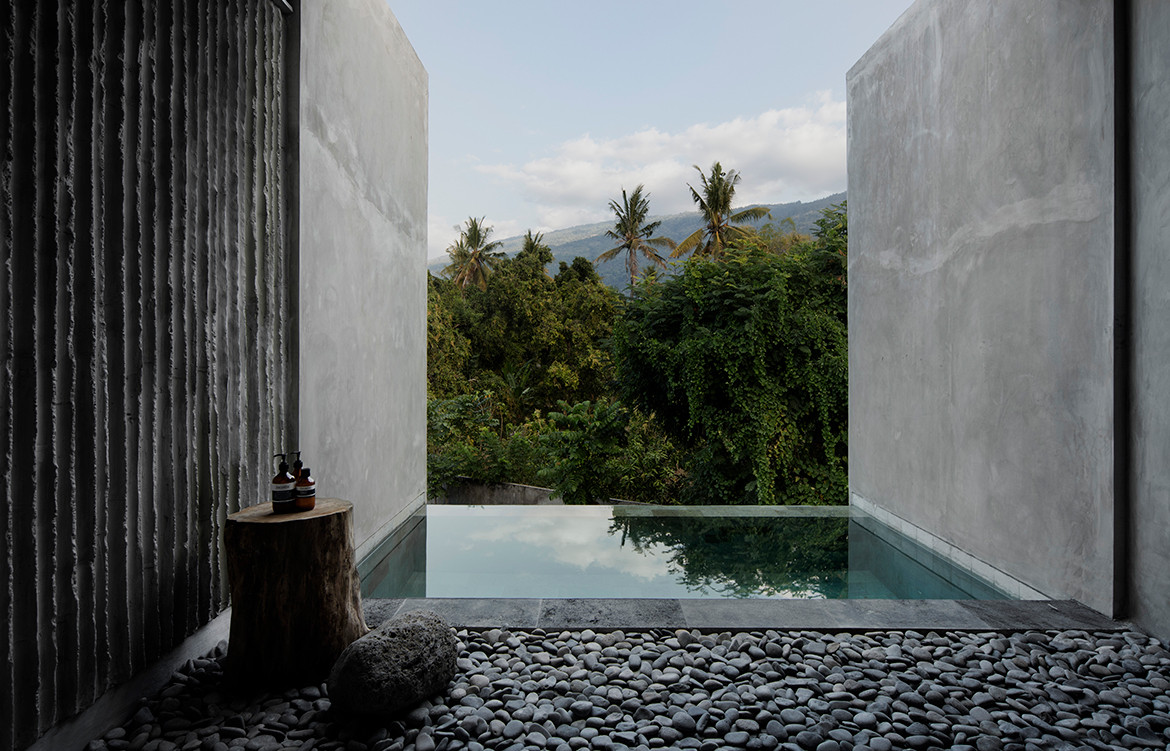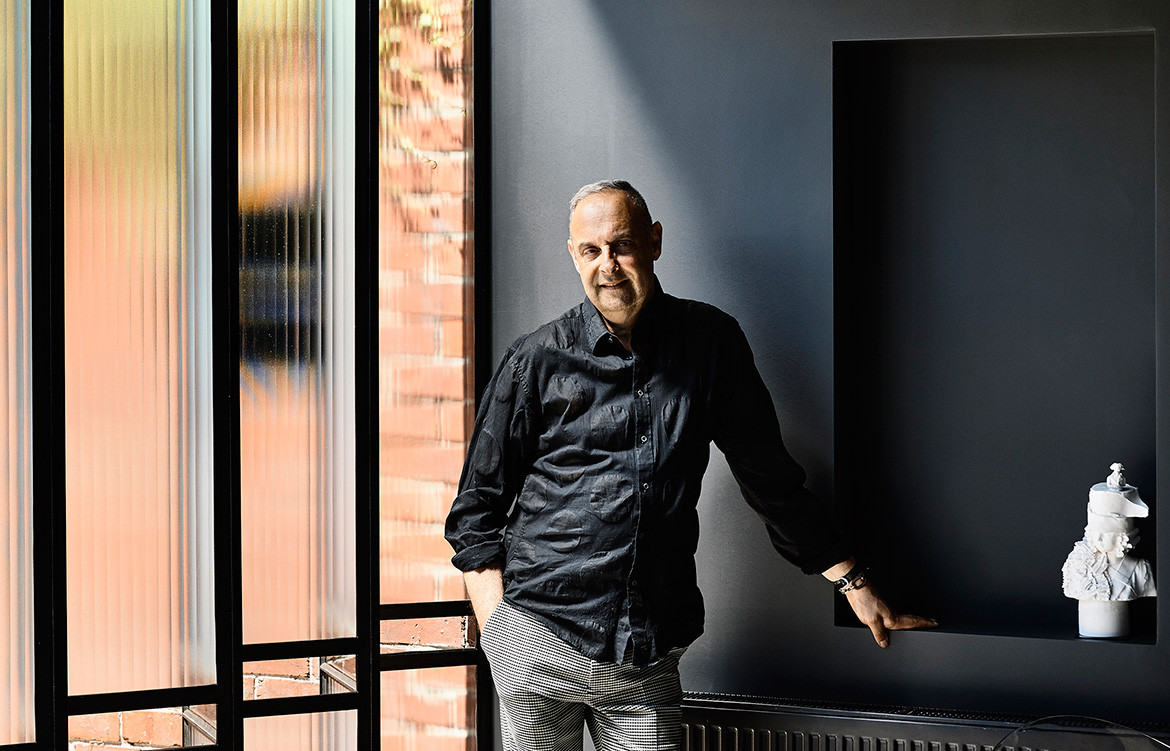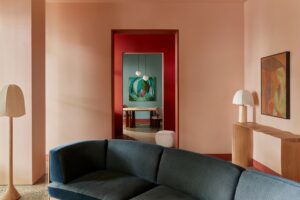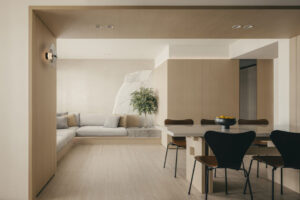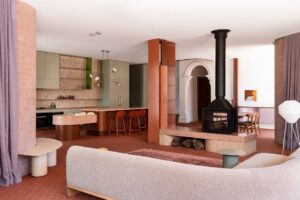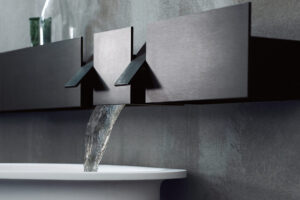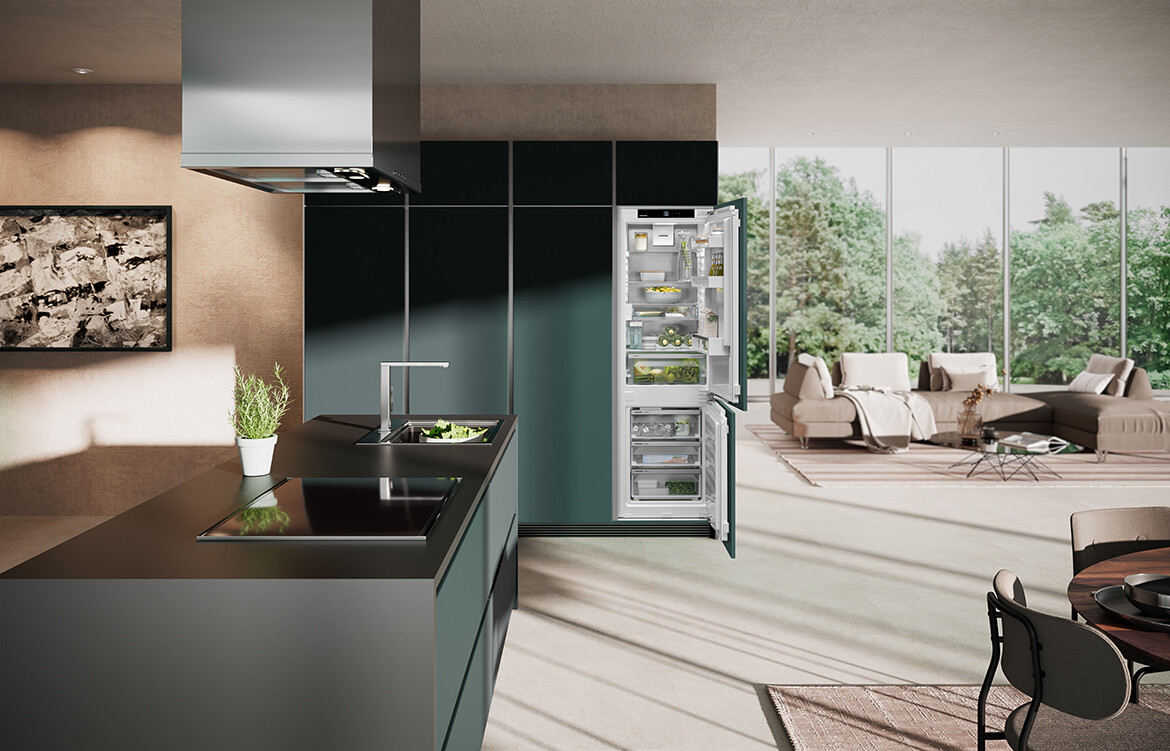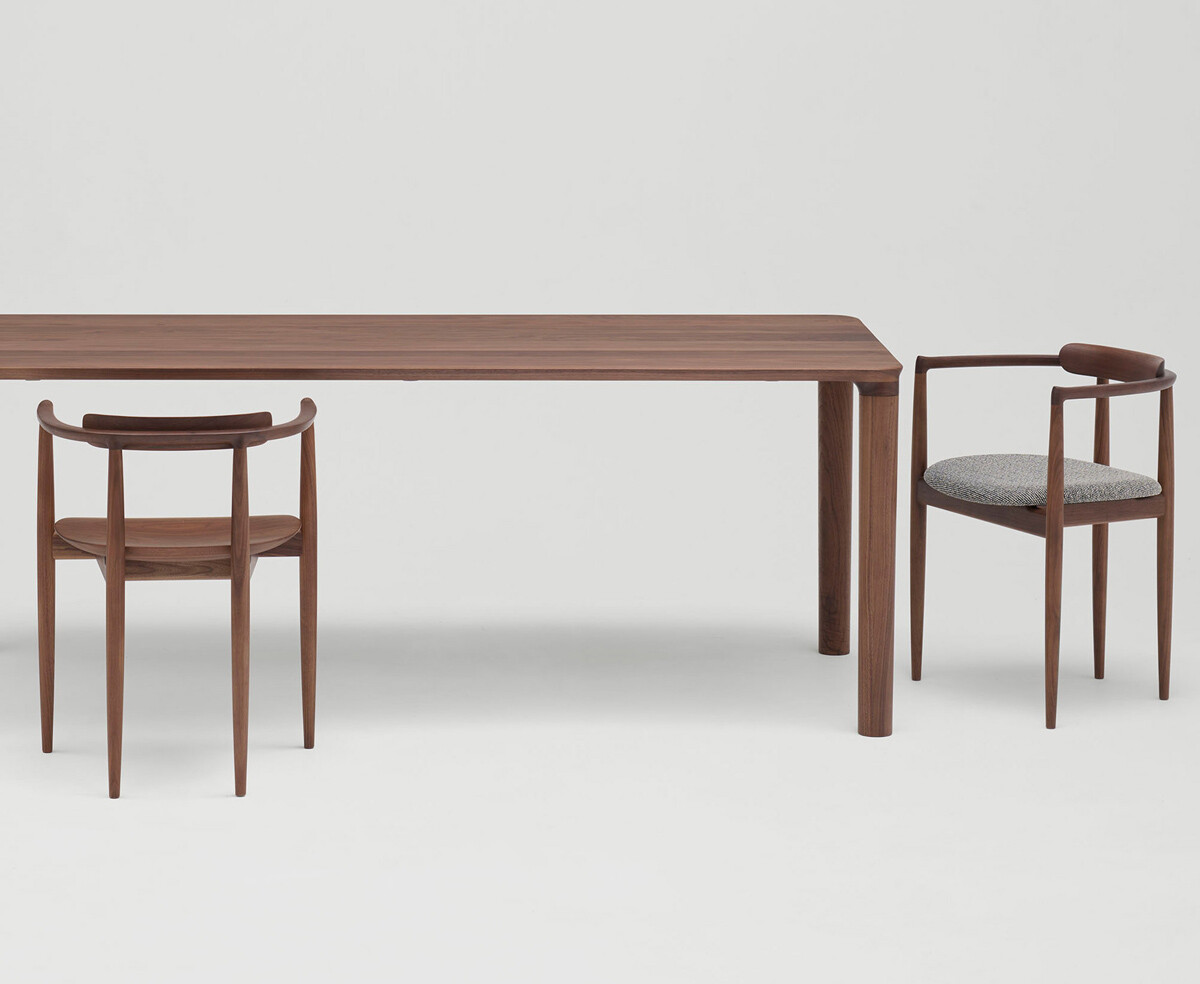Architect Nic Brunsdon uses the word ‘Instagrammable’ when describing the type of bathrooms people are seeking out. “We might not be travelling like we used to, but people are still looking for an experience in their own bathrooms. And even though your home might not be in a five-star resort, a bathroom can have that same sense of escape as soon as you pass the threshold,” says Brunsdon.
While Brunsdon’s portfolio spans mostly private residential projects, he also has several luxury resorts and spas either on the books or recently completed, including Tiing in Bali, situated three hours’ drive north of Denpasar.

Tiing, Bali. Photo by Ben Hosking
Wanting to make the resort experience unforgettable, Brunsdon considered how the natural environment could make its way into the rooms. All 14 villas offer a view of the volcanic mountain ranges at one end, and a view to the sea from the other. Set between each aspect is a body of water – a plunge pool on one side and a freestanding bath with plants on the other.
“With Tiing, the main body of water, the sea, is quite shallow and warm, not dissimilar to a shallow saucer of warm water,” says Brunsdon. Obviously, Brunsdon can’t reproduce this natural idyllic setting in the homes he designs in Perth, where his practice is based.

Photo by Ben Hosking
However, irrespective of the house or its site, Brunsdon will often locate bathrooms at the periphery of a floorplan, adjacent to a garden to offer cross ventilation. Part of ensuring a touch of luxury at home is including a free-standing bath, something that Brunsdon always accommodates for in his designs, while also avoiding a shower rosette over a bath.
There are other ways in which bathrooms can be treated like an oasis, where the bathroom expresses something completely different to other parts of the house. This was the approach used on a current project that is part of a larger renovation, where Brunsdon is using handmade Portuguese tiles that are hand-painted in bright hues.

East Fremantle House. Photo by Dion Robeson
“This house will be quite restrained in its use of materials and colour palette. But when you take a bath or simply clean your teeth, the colourful tiles will offer a completely different experience, almost an escape from the everyday routine,” he shares.
A sense of tactility in bathrooms is paramount. At the Tiing resort for example, the in-situ concrete walls have been ingrained with bamboo of different widths. In the case of Tiing, the restricted use of materials, with an emphasis on concrete, allows the views to envelop and be the focal point of the interior spaces.
“We often create large operable windows in our bathrooms, not just for ventilation, but to create a sense of bathing outdoors and being close to the elements,” says Brunsdon. Alternatively, generous skylights can strengthen a connection to the outdoors while bringing in lots of natural light.

East Fremantle House. Photo by Dion Robeson
While preferencing views and a connection to the outdoors, the bathrooms at Tiing are partially concealed within the space, while each villa is afforded privacy by elongated concrete fins that shroud the plunge pool. “In this case, there’s a sense of solitude, an escape, and importantly a complete retreat.”
Brunsdon is always conscious of providing an experience in bathrooms, some of which have a resort feel, others simply a place to escape and contemplate what lies ahead. “It’s important to engage with the eye, but also take the inhabitant’s vision beyond the windows and walls. It could be a distant rock or tree, but always connecting to nature,” adds Brunsdon.



Nic Brunsdon
nicbrunsdon.com
This article originally appeared in issue #51 of Habitus magazine – the Kitchen & Bathroom special. Read more about Nic Brunsdon’s East Fremantle House here.


